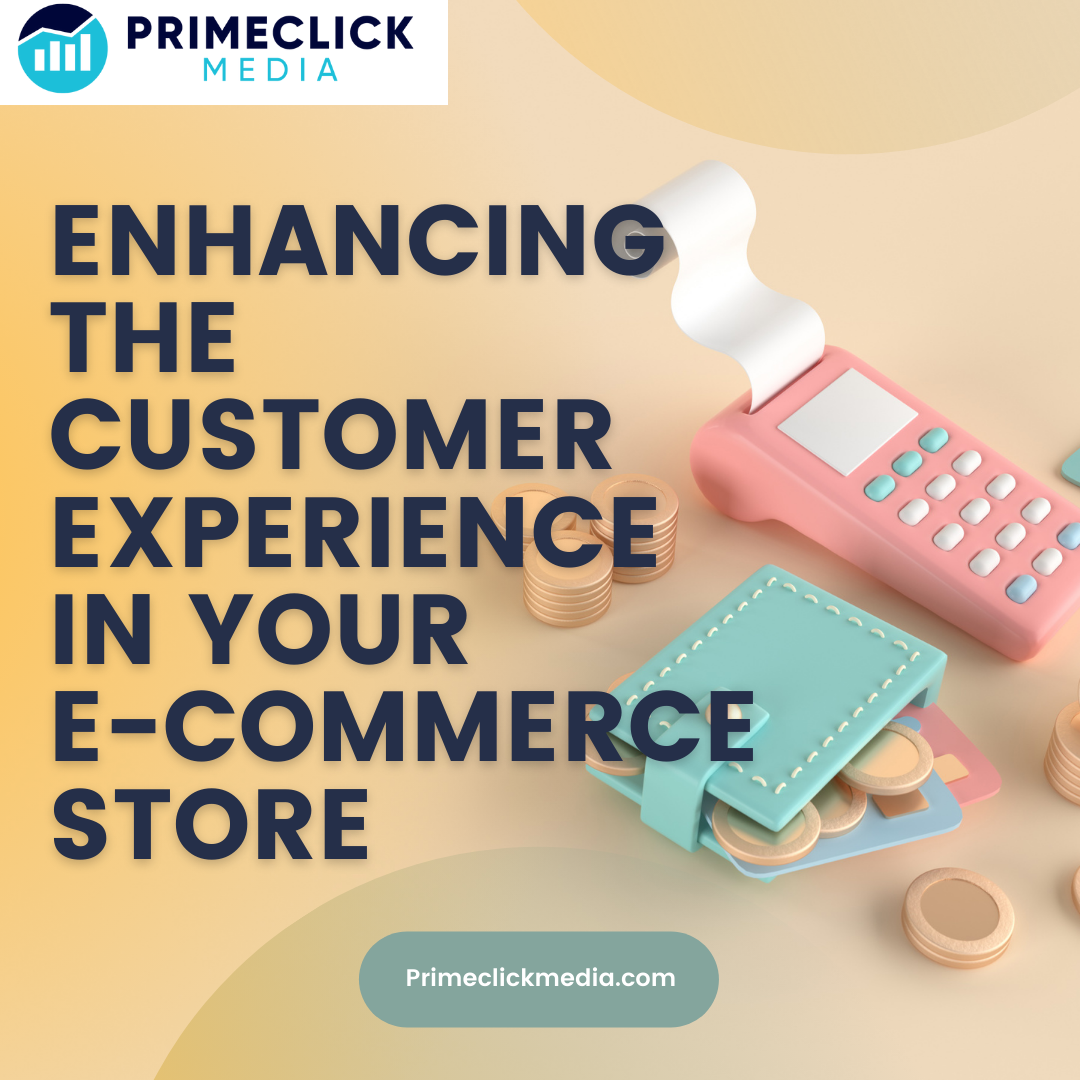In the bustling realm of online shopping, where a click can lead to a delightful purchase, the customer experience reigns supreme. Welcome to the era where e-commerce isn’t just about selling products; it’s about crafting an unforgettable journey for your customers.
Buckle up as we embark on a riveting expedition into the world of enhancing the customer experience in your very own e-commerce wonderland.
What is the E-commerce Customer Experience?
E-commerce customer experience refers to the overall interaction and impression that customers have while engaging with an online store or website to browse, select, purchase, and receive products or services. It encompasses all touchpoints and interactions a customer has with an e-commerce business, from the moment they land on the website to the post-purchase phase. The goal of a positive e-commerce customer experience is to create a seamless, enjoyable, and memorable journey for customers that leads to their satisfaction, loyalty, and potential advocacy for the brand.
Why is Customer Experience So Important for E-commerce?
Customer experience holds immense importance for e-commerce for a multitude of compelling reasons. In the digital landscape, where choices are abundant and competition is fierce, delivering a remarkable customer experience is a strategic imperative. Let’s dive into why customer experience is a game-changer for e-commerce:
- Differentiation in a Crowded Market: With countless online stores vying for attention, exceptional customer experience becomes a unique selling proposition. It sets your brand apart and creates a memorable impression that customers are more likely to remember and return to.
- Customer Loyalty and Retention: A positive customer experience cultivates loyalty. When customers have a seamless, enjoyable interaction with your e-commerce store, they’re more likely to stick around for future purchases, reducing churn and increasing customer lifetime value.
- Word-of-Mouth and Referrals: Delighted customers become brand advocates. They’re more inclined to share their positive experiences with friends, family, and social networks, driving organic referrals and expanding your customer base.
- Reduced Cart Abandonment: A streamlined and user-friendly e-commerce experience minimizes cart abandonment rates. When customers can easily navigate, find products, and complete transactions without frustration, they’re more likely to see the process through to the end.
- Positive Brand Perception: A well-crafted customer experience contributes to a positive brand image. Customers perceive your brand as reliable, trustworthy, and customer-centric, enhancing your reputation in the market.
- Increased Conversion Rates: A user-centric e-commerce journey translates to higher conversion rates. When customers find the process intuitive, transparent, and enjoyable, they’re more likely to convert from browsers to buyers.
- Enhanced Customer Satisfaction: Satisfaction is the cornerstone of success. A satisfied customer is not only more likely to make repeat purchases but is also less likely to voice complaints or request refunds.
- Minimized Customer Service Load: A user-friendly interface and informative product details reduce the need for extensive customer support. Customers can find answers and resolve issues independently, saving both parties time and effort.
- Data-Driven Insights: Monitoring and analyzing customer interactions provides invaluable insights into their preferences, behaviors, and pain points. This data can be leveraged to refine strategies, optimize processes, and tailor offerings to meet customer needs.
- Cross-Selling and Upselling Opportunities: A well-designed e-commerce experience can strategically present relevant products or complementary items during the customer journey, increasing the potential for cross-selling and upselling.
- Long-Term Business Growth: A strong focus on customer experience fosters sustainable growth. Satisfied customers form the foundation of a thriving e-commerce business, creating a positive cycle of repeat business and attracting new customers.
- Adaptation to Changing Trends: The e-commerce landscape is dynamic, and customer expectations evolve. Prioritizing customer experience ensures your business remains agile and adaptable to changing trends and technologies.
In essence, customer experience is the heart of e-commerce success. It’s the bridge that connects your brand to your audience, creating a bond built on satisfaction, trust, and mutual benefit. By investing in a stellar customer experience, you’re not just selling products; you’re crafting meaningful relationships that drive your e-commerce venture to new heights.
Tips to Enhance Customer Experience
Master the Art of User-Friendly Navigation
Imagine strolling through a charming boutique, where every rack beckons with its unique allure. Translating this enchantment to your online store means ensuring seamless navigation. Think intuitive menus, clear categories, and a search bar that’s more like a genie granting wishes.
Dazzling Product Descriptions and High-Quality Images
Your product descriptions should whisk your customers away into a world where they can virtually touch, feel, and experience the merchandise. Blend creativity with clarity, and don’t forget to accompany your words with high-resolution images that leave them yearning for more.
Speed: The Need for Instant Gratification
Patience is a virtue, but let’s be honest – not many have it in the digital realm. A swift-loading website is your golden ticket to customer contentment. No one likes waiting for pages to load; it’s like standing in line at a café with no coffee at the end.
Personalization – Where Every Click Feels Like Home
“Welcome back, [Customer Name],” isn’t that music to your ears? Embrace the power of personalized recommendations and tailor-made shopping experiences. When customers feel understood and catered to, your store becomes their haven.
Reviews and Ratings: The Social Proof Symphony
Ever relied on your friend’s restaurant recommendation? It’s the same online. Encourage your customers to share their thoughts through reviews and ratings. This social proof symphony can turn a cautious browser into a confident buyer.
Seamless Checkout Experience
Picture this: a cart full of goodies, a smooth checkout process, and voila – the order’s confirmed. From saving their information for a swifter next time to multiple payment options, ensure that checking out is as effortless as a sun-soaked day at the beach.
Responsive Customer Support
A helping hand is never out of style. Integrate a chatbot or a live chat feature that can address customer queries in real time. Remember, a little assistance can turn a frustrated shopper into a loyal fan.
Mobile Optimization – The Pocket-Sized Mall
Your online store isn’t just on computers; it’s in your customers’ pockets. With the majority of shopping happening on mobile devices, optimizing your site for smartphones is non-negotiable.
Surprises that Spark Joy
Who doesn’t love a pleasant surprise? Throw in a discount code, a freebie, or a birthday treat – it’s like sprinkling a dash of magic that keeps your customers coming back for more.
Feedback Loop for Continuous Improvement
The road to excellence is paved with feedback. Encourage your customers to share their thoughts post-purchase. Their insights are priceless nuggets that can guide your store’s evolution.
E-commerce Customer Experience (ECX) vs. User Experience (UX)
E-commerce Customer Experience (ECX) and User Experience (UX) are closely related concepts, but they focus on different aspects of the online shopping journey. Let’s break down the differences between ECX and UX:
E-commerce Customer Experience (ECX)
E-commerce Customer Experience refers to the overall impression and interactions that a customer has with an online store throughout their entire shopping journey, from initial browsing to post-purchase activities. ECX encompasses a broader scope, including interactions beyond just the website interface. It takes into account the entire relationship between the customer and the e-commerce brand. Key elements of ECX include:
- Website Design and Navigation: The layout, design, and ease of use of the website play a role in ECX. Customers should be able to find products quickly and navigate seamlessly.
- Product Information and Presentation: Detailed product descriptions, high-quality images, and accurate information contribute to a positive ECX.
- Personalization and Recommendations: Customized recommendations based on customer preferences enhance ECX by making the shopping journey more relevant and engaging.
- Checkout Process and Payment Options: An efficient and user-friendly checkout process with various payment options is essential for a smooth ECX.
- Shipping and Delivery: Timely and transparent shipping, along with reliable delivery tracking, contribute to a positive post-purchase ECX.
- Customer Support and Communication: Responsiveness and helpfulness of customer support, as well as post-purchase communication, are crucial components of ECX.
- Returns and Refunds: A hassle-free and fair returns process enhances ECX by showing that the brand cares about customer satisfaction even after the purchase.
User Experience (UX)
User Experience focuses specifically on the usability, accessibility, and overall satisfaction that users (customers) have when interacting with a digital product or interface, such as a website or mobile app. UX design aims to create a seamless, intuitive, and enjoyable experience for users by considering their needs, behaviors, and pain points. Key elements of UX include:
- Usability and Functionality: UX design ensures that the website or app is easy to use and functional, providing users with a clear path to accomplish their goals.
- User Interface (UI) Design: UI design is part of UX and focuses on creating visually appealing and intuitive interfaces that guide users through their tasks.
- Accessibility: UX design ensures that the digital product is accessible to users of all abilities, including those with disabilities.
- Information Architecture: Organizing content and features in a logical and user-friendly way helps users find what they need without frustration.
- Interactivity and Responsiveness: UX design considers how users interact with elements on the screen and ensures that interactions are smooth and responsive.
- Feedback and Error Handling: Providing feedback for user actions and handling errors gracefully are important aspects of a positive UX.
Conclusion
So there you have it, the secret recipe for enhancing the customer experience in your e-commerce haven. As you weave these elements into your digital tapestry, remember that a satisfied customer isn’t just a transaction – they’re an advocate, a storyteller, and a vital ingredient in your e-commerce success story. Here’s to crafting an online realm where every click is a step toward an enchanting experience!





